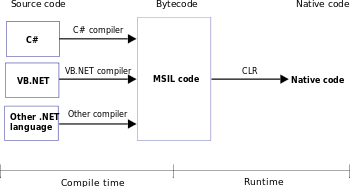介紹

Stack(棧)、Heap(堆)記憶體分配發生了什麼?
Stack
- 儲存實質型別;
- 先進後出的原則;
- 是屬於自己維護的,當元素不再被使用會被拋出;
- 空間較小,訪問速度快;
Heap
- 堆(也叫做託管堆)存儲 參考型別資料;
- 空間釋放有垃圾管理機制;
- 堆沒有訪問限制,按照地址索引;
- 空間較大,訪問速度比Stack慢;

實質型別(值類型) VS 參考型別(引用類型)
- 實質型別:
bool
byte
char
decimal
double
enum
float
int
long
sbyte
short
struct
uint
ulong
ushort - 參考型別:
class
interface
delegate
object
string
小測驗 Part1
public class Student
{
public string Name { get; private set; }
public int Tag { get; set; }
public Student(string name)
{
this.Name = name;
}
public void Show()
{
int iNum = 0;
Console.WriteLine($"This is {this.Name} {iNum} show!");
}
}
這時候,以下四個會放在Stack還是Heap?
student
Tag
Name
iNum
Student student = new Student("小昶");
student.Tag = 1;
student.Show();
答案:
student => Heap
Tag => Heap
Name => Heap
iNum => Stack
小測驗 Part2
public struct Salary這時候,以下四個會放在Stack還是Heap?
{
public int Base { get; set; }
public string Remark { get; set; }
public void Show()
{
string text = "2020年要消滅貧困人口,準備消失了!";
Console.WriteLine(text);
}
}
salary
Base
Remark
text
Salary salary = new Salary();
salary.Base = 10000;
salary.Remark = "2020年貧困人口";
salary.Show();
答案:
salary => Stack
Base => Stack
Remark => Heap
text => Heap
結論:
參考型別一定會在HEAP裡面,實質型別要看依附的對象而決定
關於C#與IL對比解讀、GC的機制和優化之後會專門寫一篇文章跟大家講解
參考資料
Common Language Runtime (CLR) 概觀
本篇已同步發表至個人部落格
https://moushih.com/2022ithome24/
鐵人賽文章














